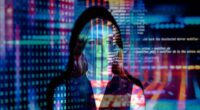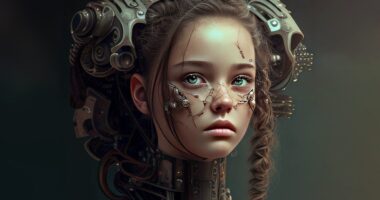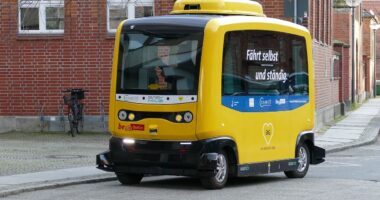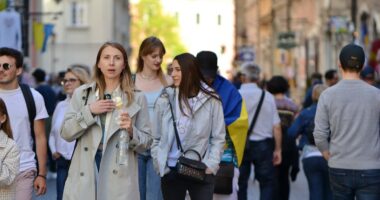Artificial Intelligence (AI) has made remarkable strides across various domains, and creativity is no exception. As AI systems increasingly participate in artistic creation, design, and music, the question arises: can machines truly be creative? This article explores the intersection of AI and creativity, examining how AI is used in creative fields and the debate surrounding machine-generated creativity.
1. Understanding AI and Creativity
Creativity traditionally involves generating original ideas and expressions, often with emotional depth and personal insight. AI’s involvement in creative processes challenges these traditional notions. Key aspects include:
- Generative Algorithms: AI uses algorithms to produce content that mimics human creativity. These algorithms analyze large datasets to generate new, unique outputs based on patterns learned from the data.
- Machine Learning Models: AI models like neural networks are trained on vast amounts of data to create art, music, and literature. These models can produce outputs that are surprising and original, yet their creativity is rooted in existing data.
2. AI in Art and Design
AI is increasingly used in the fields of art and design, offering new possibilities and tools for artists. Examples include:
- AI-Generated Art: AI algorithms create visual art by learning from existing artworks. Tools like DeepArt and DALL-E generate unique images based on style transfer and text prompts. These creations can be visually striking and exhibit novel artistic styles.
- Design Assistance: AI aids designers by suggesting color schemes, layouts, and design elements. Platforms like Adobe Sensei use AI to enhance design workflows and automate repetitive tasks, allowing designers to focus on more creative aspects.
- Artistic Collaboration: AI tools collaborate with human artists to explore new creative possibilities. For example, artists can use AI to generate initial concepts or refine their work, combining human intuition with machine-generated ideas.
3. AI in Music
AI’s role in music composition and production highlights its potential to contribute to creative processes:
- Composing Music: AI algorithms can compose original music by analyzing patterns in existing compositions. Tools like AIVA and Jukedeck create music in various genres, from classical to electronic, based on user inputs.
- Music Production: AI assists in music production by automating tasks such as mixing and mastering. AI tools analyze tracks to provide recommendations for improving sound quality and achieving desired effects.
- Collaborative Music Creation: Musicians use AI to explore new musical ideas and generate novel compositions. AI systems can suggest melodies, harmonies, and rhythms, expanding the creative possibilities for artists.
4. AI in Writing and Literature
AI’s impact on writing and literature is also notable, with tools that assist in creating text and narratives:
- Text Generation: AI models like GPT-3 can generate coherent and contextually relevant text, including articles, stories, and poetry. These models use language patterns learned from extensive datasets to produce written content.
- Creative Writing Assistance: AI tools assist writers by offering suggestions for plot development, character creation, and dialogue. These tools can help overcome writer’s block and provide new perspectives on storytelling.
- Literary Analysis: AI analyzes literary works to identify patterns, themes, and stylistic elements. This analysis can inform writers about trends and techniques used in successful literature.
5. The Debate on Machine Creativity
The question of whether machines can be truly creative is a topic of ongoing debate:
- Creativity vs. Imitation: Critics argue that AI’s creativity is limited to imitation, as machines generate outputs based on learned patterns rather than original thought. They contend that AI lacks the emotional and intentional aspects of human creativity.
- Originality and Innovation: Proponents argue that AI can produce novel and original content, challenging traditional notions of creativity. They emphasize that AI’s ability to combine and transform ideas in unique ways demonstrates a form of creative expression.
- Human-AI Collaboration: Some view AI as a tool that enhances human creativity rather than replacing it. AI can provide new perspectives and insights, facilitating collaborative creative processes between humans and machines.
6. Future Directions
The future of AI and creativity holds exciting possibilities:
- Enhanced Creativity Tools: AI will continue to evolve, offering more sophisticated tools for artists, musicians, and writers. These tools will expand creative horizons and provide new ways to explore artistic expression.
- Ethical Considerations: As AI plays a larger role in creative fields, ethical considerations regarding authorship, originality, and intellectual property will become increasingly important.
- Interdisciplinary Collaboration: AI’s integration into creative industries will foster interdisciplinary collaboration, bringing together technologists, artists, and researchers to explore the boundaries of machine creativity.
Conclusion
AI’s intersection with creativity raises intriguing questions about the nature of artistic expression and the role of machines in creative processes. From generating art and music to assisting in writing, AI demonstrates its potential to contribute to and expand human creativity. While debates continue about the extent of machine creativity, AI’s role as a tool for enhancing and collaborating with human artists is undeniable. As technology advances, AI will continue to shape the future of creativity, offering new opportunities and challenges for artists and creators.





